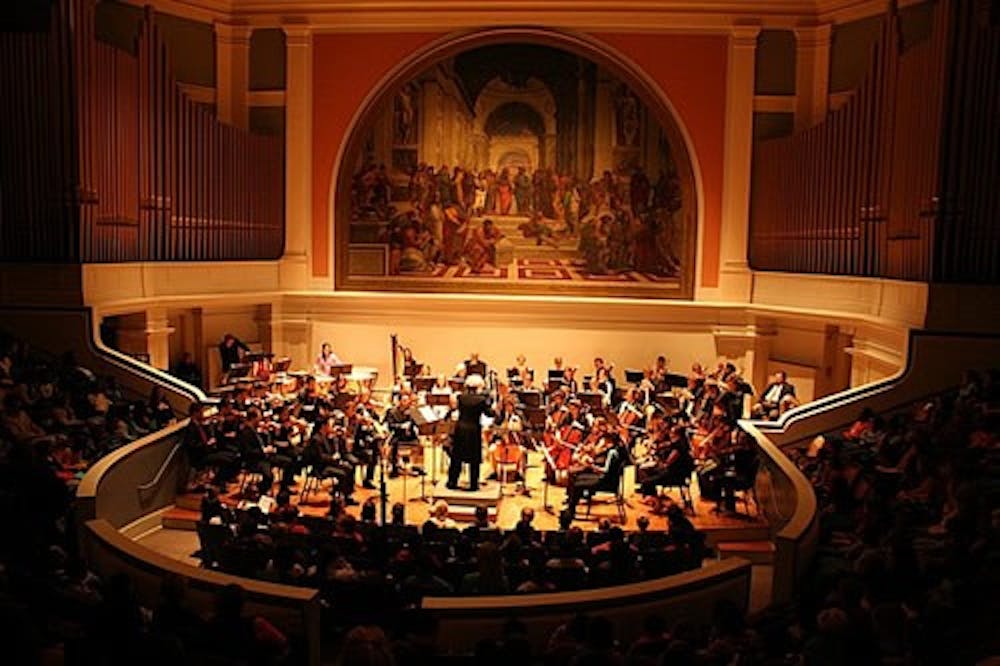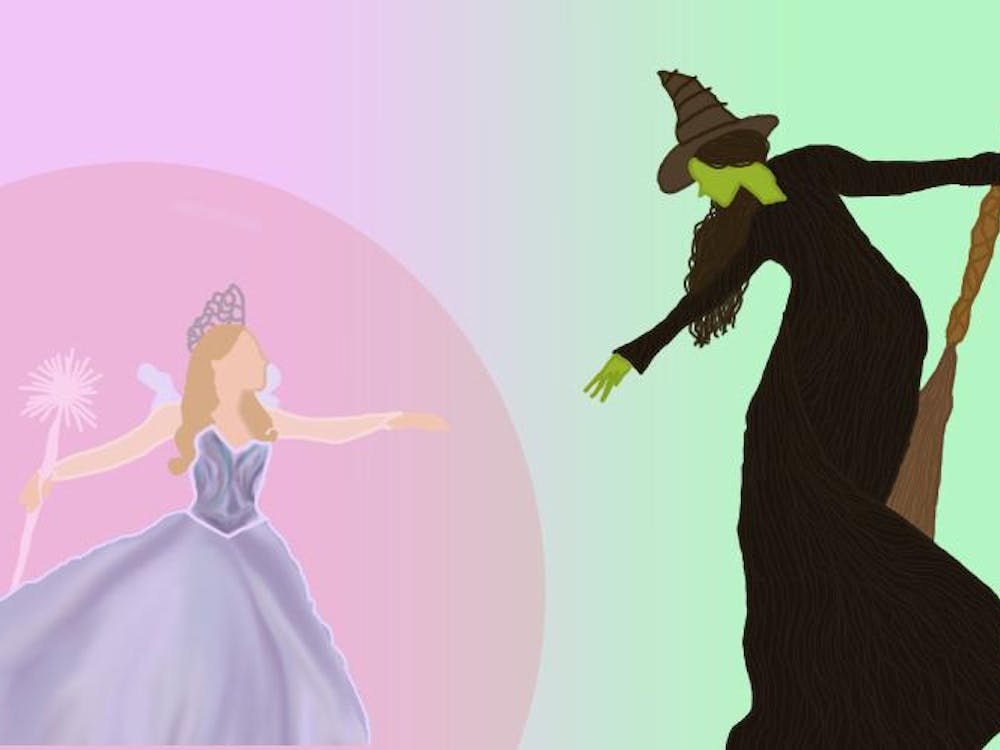The Charlottesville Symphony performed at Old Cabell Hall under the direction of Cheung Chau last Saturday. Chau was the last of three finalists in a series of guest directors who have led the orchestra in the hopes of taking over after Kate Tamarkin’s retirement this spring. After the first concert in February, second in November and third this month, the audience was asked to take a short survey. Their input on the conductor’s relationship with the artists and audience will be used by the search committee, who will make the final decision on Tamarkin’s successor.
Chau’s experience would suit him well to be the director of the Charlottesville Symphony. He has conducted groups around the world, and currently serves as director of orchestral studies at Utah Valley University, music director of Sinfonietta Polonia in Poznań, Poland and music director of the Utah Valley Youth Symphony.
The night of the event, a sold-out concert hall greeted him warmly. Chau was engaging and spirited for the duration of the program, which included works by Ravel, Schumann and Tchaikovsky.
Ravel’s “Boléro” began quite slowly, but picked up speed in the second half and made the somewhat tedious beginning worthwhile. The melodic line moved through each of the sections, finally tracking them all along in its percussive and boisterous ending. At around 15 minutes, the piece was short enough to grab the audience’s attention before they listened to a darker, longer work.
Guest cellist Cicely Parnas was the star of Schumann’s “Cello Concerto in A minor, Op. 129.” Parnas has performed across the U.S., produced multiple albums and has been recognized by NPR, The New York Times and The Kennedy Center for her talent.
The most shocking line in Parnas’ program biography read, “Ms. Parnas performs on a 1712 Giovanni Grancino cello.” In the concert, she commanded her centuries-old cello and the entire stage. Parnas produced the type of buttery sound that immediately draws listeners in. Chau gave signals to the group based on Parnas’ tempo, and while she was the focal point of the piece, she did not overpower the group. Her most impressive moments were shifts from sustained piano notes to incredibly fast scales and harsh staccatos. The standing ovation she received lasted long enough for her to return to the stage twice to bow.
Chau prefaced the final piece — Tchaikovsky’s “Symphony No. 6 in B minor, Op. 74 Pathétique” — with a brief explanation. Musically, Chau said, the piece made its mark on other composers by popularizing the 5/4 waltz, instead of waltzes with a traditional 3/4 meter. In terms of meaning, the piece is incredibly mysterious. Chau said Tchaikovsky was very secretive while composing the work and gave up on certain aspirations in order to maintain this level of mysteriousness.
“There are still unanswered questions,” Chau said.
He said the ambiguity is actually positive because it means the audience’s view of the work is shaped solely by their listening, setting it free of preconceived notions. Chau did offer several popular interpretations. Some theories argue the final movement is “Tchaikovsky’s suicide note.” Others believe the piece as a whole mirrors the human life cycle, beginning with birth, moving into joyful youth, a more sombre adulthood and darker end. Chau said the composer actually passed away a little over a week after the work’s premiere.
In either case, this introduction set the tone for the chilling end to the performance. The horns and lower strings dominate the last several minutes of the fourth movement, working as brakes that slow the motion of earlier movements. After 45 minutes of movement, the end gets gradually more dramatic. Chau let the last note finish out to roughly 10 seconds of silence.
After the eerie pause, Chau finally lowered his arms. He and the Symphony received a standing ovation from the entire house. When everyone began filing out of the Hall, Chau came upstairs and stood by the staircase — individually thanking musicians for their good work. Even though he was likely quite exhausted, Chau took this extra step to form relationships with his performers. It was refreshing to see a director’s level of engagement onstage translate to one-on-one interactions with the artists.
Based on the group’s performance and small details like these, Chau proves himself worthy to be the director for the Charlottesville Symphony in its next season.







